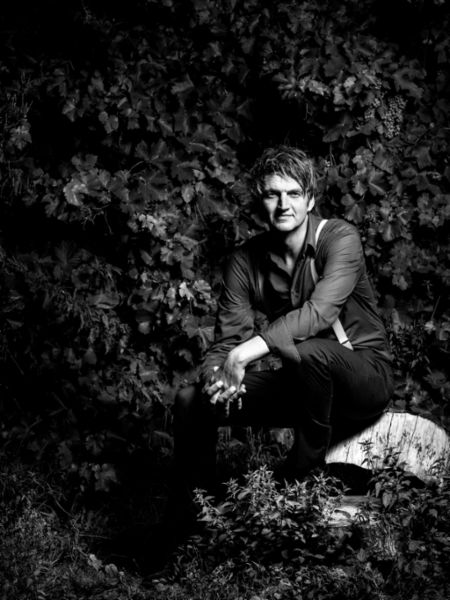Sun on Wheels
A 3,022-kilometer race across Australia powered solely by the sun. A team of students from RWTH Aachen University are entering the World Solar Challenge—with the help of specialists from Porsche Motorsports.
A smooth and nearly soundless start. With a Plexiglas dome on its flat body and the double keel of a catamaran, it looks like an apparition from the future. Yet it also looks somehow familiar, like a fantasy vehicle from 1960s-era comic books whose colored lines had us dreaming of the groundbreaking technologies to come. And now one of those dreams is humming right past us, with zero emissions because it’s fueled by the sun.

The Sonnenwagen, or “sun car” as the solar-powered vehicle is called, rolls softly to a stop. Christiane Rupp, Hendrik Löbberding, and Markus Eckstein immediately start their inspections. Marc Locke, the driver, climbs out of the austere cockpit and removes his helmet. They all study at either RWTH Aachen University or the Aachen University of Applied Sciences. They, and around forty of their fellow students on the “Sonnenwagen Aachen” team, have an ambitious aim: to complete the World Solar Challenge in Australia, the world’s most famous race for solar-powered cars. It’s 3,022 kilometers long and no cakewalk.

Essential data analysis:
Project director Hendrik Löbberding (center) discusses the results with Markus Eckstein (left) and Marc Locke.World Solar Challange
The World Solar Challenge in Australia is considered the toughest event for solar cars worldwide. It will be held for the fourteenth time from October 8 to October 15 of this year. It runs straight through the Outback for 3,022 kilometers, along Stuart Highway from Darwin in the north to Adelaide in the south. Contestants have only six days and can drive only from eight in the morning to five in the afternoon, including breaks. They may not go below an average speed of 65 kmh. Drivers are required to drink two liters of fluids—an absolute necessity at temperatures of over 40 degrees Celsius.
www.worldsolarchallenge.org
The students designed the car themselves. They worked on it for two years, applying their skills from a wide array of disciplines. Inspired by a report on the World Solar Challenge in 2015, they started with a blank piece of paper. Since then the lights in their small lab have burned nearly around the clock and the idea of efficiency has never left their minds. Whether applied to the rolling resistance for the tires, the capacity of the batteries and the solar cells, or the use of the budget at their disposal, efficiency is the key to success. It’s a challenge not only for the Sonnenwagen but also for the 919 Hybrid—the LMP1 prototype that gave Porsche its third successive victory at the 24 Hours of Le Mans this year. For the up-and-coming engineers in Aachen, it made perfect sense to work together with specialists from the sports-car maker in Stuttgart. The Porsche motorsport experts are there for the team with their expertise and financial support.
The students had already put excellent technical systems into place. They gave their solar vehicle a stable tubular steel frame that carries all the components and ensures the requisite crash resistance. Its aerodynamically optimized chassis consists of lightweight fiber composites. Some 260 silicon solar cells, which charge a custom-made lithium-ion battery pack of their own design, cover a surface of just over four square meters. The students also developed a 135-volt wheel hub motor with an output of 1.4 kW—hardly more than a hair dryer, yet enough to power the two-hundred-kilo car to approximately 135 kmh; however, this is not their aim. At an average speed of 70 to 80 kmh, the battery will run for four hours, giving the solar car a range of a good three hundred kilometers.

The Sonnenwagen’s driver:
Marc Locke has to be fit because temperatures in Australia can reach 45 degrees Celsius. Student Christiane Rupp makes some final adjustments before the test-drive begins.Learning from the 919 Hybrid
“Our main aim is to finish the race,” says project director Hendrik Löbberding. “Many of the cars that entered the 2015 World Solar Challenge failed to meet the requirements.” To head off this fate right from the start, nothing could be more valuable than the experience gained by the Porsche LMP team in the FIA World Endurance Championship. Its broad range of expertise covers tricky transport logistics for the flammable battery packs, precision weather monitoring techniques, and brake energy recovery systems. Like the 919 Hybrid, the Sonnenwagen recoups some of its drive energy while braking. Preparations have even included testing the solar car in the wind tunnel at the Porsche Development Center in Weissach.
“The students from Aachen go to the absolute limit in developing their race car, just like we do,” says Porsche LMP team director Andreas Seidl. He lists a few more similarities: “Such major topics as lightweight construction, cooling, efficiency, high-performance electric drives, and aerodynamics overlap with the requirements for our 919 Hybrid.” As far as the students are concerned, the 919 Hybrid—with its three victories at Le Mans—is not a bad role model.


